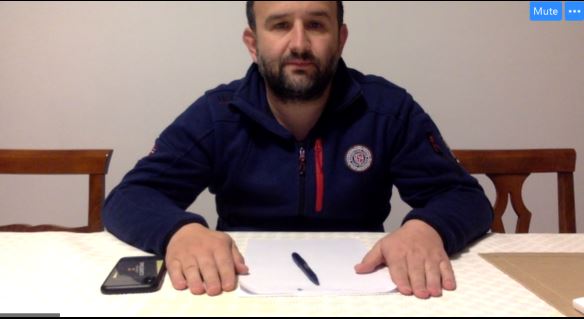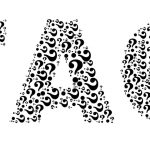L’Ateneo ha deciso di rendere possibile l’effettuazione a distanza anche degli esami scritti per consentire agli studenti di non accumulare ritardi nella carriera universitaria. (English below)
Ma tale modalità richiede, da parte degli studenti, un comportamento collaborativo ed eticamente corretto.
Le indicazioni che seguono sono rivolte agli studenti che vogliano effettuare un esame scritto online negli appelli di recupero previsti ad aprile e maggio 2020.
Tali indicazioni potranno eventualmente essere integrate da parte del docente di riferimento dell’appello.
La partecipazione alla videoconferenza implica l’accettazione a farsi riprendere. Le riprese saranno effettuate ai soli fini del corretto svolgimento della prova d’esame, saranno accessibili ai soli componenti della Commissione d’esame e al personale tecnico dedicato e la registrazione verrà cancellata dopo la verbalizzazione del voto.
1. DOTAZIONI INFORMATICHE NECESSARIE
Hardware:
- PC/Mac/tablet munito di webcam e microfono (integrato oppure esterno) che siano compatibili con il software per videoconferenze
- Uno scanner o, in mancanza, uno smartphone
Software:
- Se necessario, installare il software per videoconferenza indicato dal docente (es. Zoom, GoogleMeet, Skype for Business,…).
- Per gli studenti privi di scanner: installare un software gratuito che permetta di scansionare il proprio elaborato scritto con lo smartphone e di trasformarlo in un unico documento .pdf (consigliato) o jpg. L’app di Google Drive offre nativamente questa funzione. In alternativa si consiglia di installare Office Lens o Camscanner. Queste applicazioni (e altre simili) sono disponibili gratuitamente per Android e iOs.
- È necessario verificare che le applicazioni, il browser e il software per la videochiamata siano aggiornati all’ultima versione
2. PRIMA DELLA PROVA
1) Gli studenti dovranno:
- Provare prima dell’esame a produrre e consegnare un file unico contenente due o più foto di fogli con il software per scannerizzazione da cellulare (vedi raccomandazione finale in fondo alle presenti linee-guida).
- Se necessario, installare il software per la videoconferenza specificato dal docente
- Predisporre una stanza priva di altre persone e monitor; se è strutturalmente impossibile spostare un monitor, coprirlo affinché non sia visibile
- Disporre di fogli bianchi, penna con un tratto chiaramente visibile e altro materiale indicato dal docente (es. calcolatrice), di un documento di riconoscimento con fotografia e attrezzarsi per farsi riprendere
- Tenere lo smartphone col quale verranno fatte le scansioni sempre visibile sul tavolo, spento e a faccia in giù. Non sarà consentita la presenza di altro hardware (e.g. smartwatch, auricolari, etc.) oltre a quello descritto precedentemente
2) Gli studenti dovranno rispettare le seguenti regole:
- Se uno studente è sorpreso a copiare o ha un comportamento eticamente scorretto il suo esame sarà annullato
- Se uno studente lascia la postazione prima della conclusione della prova scritta il suo esame verrà annullato
- Il docente a suo giudizio può chiedere allo studente delucidazioni sullo svolgimento (esprimere il processo logico)
3. AVVIO DELL’ESAME
- Collegarsi alla videochiamata tramite le modalità indicate via mail dal docente: lo studente deve collegarsi con il proprio nome e cognome (e non col solo nome o con un nickname).
- Tenere il proprio microfono sempre acceso durante la prova, salvo indicazioni contrarie del docente.
- Lo studente mostra via webcam il documento di riconoscimento che verrà confrontato con il volto dello studente.
- Lo studente dovrà tenere lo smartphone in vista e a faccia in giù.
- Lo studente scollegherà, se possibile, la tastiera. In ogni caso lo studente dovrà allontanare dal proprio foglio: schermo, webcam e tastiera in modo tale da rendere le mani il più possibile visibili.
- Lo studente stamperà il testo d’esame o lo terrà aperto sullo schermo facendo in modo che rimanga in una schermata sola
Ecco la posizione corretta che dovrebbe apparire sullo schermo:

* seduto a 80 cm. / 1 m. dalla webcam
* mani e foglio visibili
* smartphone in vista e a faccia in giù
* tastiera allontanata.
4 .SVOLGIMENTO DELL’ESAME
- I file contenenti la prova scritta verranno inviati allo studente via e-mail
- Una volta ricevuto il testo della prova, gli studenti stampano o guardano sul monitor il testo e iniziano la prova
- Durante la prova il docente può chiedere di condividere lo schermo/desktop in videochiamata, mantenendo comunque visibile il video della webcam dello studente (tale possibilità è offerta, ad esempio, da GoogleMeet e Zoom).
- Durante lo svolgimento della prova è vietato l’utilizzo della tastiera del PC/Mac/Tablet e del mouse a meno che non sia richiesto dal docente
- Il docente risponde in chat ad eventuali domande. Lo studente, prima di utilizzare la chat, alza la mano e chiama il docente; solo dopo essere stato autorizzato utilizza la tastiera per scrivere
- Durante la prova il docente può chiedere di visualizzare con la webcam la stanza
5. CONSEGNA
- All’ora prestabilita gli studenti allontanano le penne e mostrano tutti gli elaborati scritti alla webcam, pagina per pagina
- Gli studenti scannerizzano o fotografano i loro fogli ed elaborano un unico file della loro prova, nominato CognomeNome.pdf (consigliato) o jpg.
- Gli studenti effettuano l’upload del file su Kiro o nella cartella del cloud indicata dal docente oppure lo inviano via email all’indirizzo indicato dal docente. Questa modalità verrà comunicata direttamente dal docente.
- Il docente potrà a sua scelta richiedere una consegna frazionata della prova scritta.
- Il docente verifica la corretta ricezione dell’elaborato scritto e congeda lo studente.
6. GARANZIE DI AUTENTICITÀ DELL’ELABORATO
Come ulteriore garanzia di autenticità dell’elaborato, il docente può:
- pochi minuti prima del termine della prova, comunicare un numero a cinque cifre che gli studenti dovranno apporre su ogni foglio dei loro elaborati;
- al termine della prova, ma prima della consegna, chiedere ad ogni studente di mostrare il proprio elaborato alla webcam in modo che il docente lo possa fotografare.
7. TUTORIAL
Al fine di facilitare la procedura di confezionamento e consegna del compito sono stati predisposti i seguenti due tutorial:
– Scansione documenti con smartphone: https://youtu.be/OPF7APNatFw
– Scansione e consegna in Kiro – http://idcd.unipv.it/wp-content/uploads/2020/03/Tutorial- Scansione-file.pdf
8. CANDIDATI CON DIAGNOSI DI DISTURBO SPECIFICO DELL’APPRENDIMENTO O CON DISABILITÀ CERTIFICATA
Ai candidati con diagnosi di DSA o con disabilità certificati è assicurato lo svolgimento a distanza della prova con l’ausilio delle misure normativamente previste. A questo proposito, il candidato contatta il SAISD almeno sette giorni prima della data dell’esame per produrre esplicita richiesta riguardo all’ausilio necessario, nonché all’eventuale necessità di tempi aggiuntivi per l’espletamento delle prove. Il candidato deve verificare, inoltre, la funzionalità degli apparati informatici. Il SAISD, sulla base della documentazione pervenuta, di concerto con il Delegato del Rettore per la Disabilità e le Esigenze Speciali, trasmette tempestivamente al Presidente della Commissione d’esame le istruzioni tecniche del caso per lo svolgimento delle prove.
9. RACCOMANDAZIONE FINALE
SI RACCOMANDA agli studenti che intendano sostenere gli esami scritti online nelle sessioni di aprile e maggio di PROVARE A CONSEGNARE UN ELABORATO DI PROVA, confezionato secondo le procedure sopra indicate.
Link per la consegna di prova: https://kiro2014.unipv.it/moodle26/course/view.php?id=624 (si accede con le credenziali di Ateneo).
Pavia, 27 marzo 2020
***
WRITTEN ONLINE EXAMS:Guidelines for students
The University has decided to make it possible to take written exams online to avoid that students accumulate delays in their university careers.
Though, this modality requires that students have a collaborative and ethically correct behaviour.
The following indications are aimed at students who want to take a written exam online in the recovery appeals scheduled for April and May 2020.
These indications may eventually be integrated by the professor.
Participation in the videoconference implies acceptance to be filmed. The shooting will be carried out for the sole purpose of the correct conduct of the exam, will be accessible only to the members of the Exam Commission and to the dedicated technical staff and the registration will be cancelled after the vote has been registered.
1. IT EQUIPMENT REQUIRED
Hardware:
- PC / Mac / tablet equipped with webcam and microphone (integrated or external) that are compatible with video conferencing software;
- a scanner or a smartphone.
Software:
- If necessary, install the video conferencing software indicated by the professor (eg Zoom, GoogleMeet, Skype for Business, …).
- For students who don’t have a scanner: install a free software that allows you to scan your written work with your smartphone and transform it into a single pdf (recommended) or jpg document. The Google Drive app offers this feature. Alternatively, we recommend installing Office Lens or Camscanner. These applications (and others similar) are available for free for Android and iOs.
- It is necessary to verify that the applications, the browser and the video call software are updated to the latest version available.
2. BEFORE THE TEST
1) Students will have to:
- (before the exam) try to prepare and submit a single file containing two or more photos of sheets with the software for scanning for mobile phones (see final recommendation at the bottom of these guidelines).
- If necessary, install the video conferencing software specified by the teacher.
- Arrange a room without other people and monitors; if it is structurally impossible to move a monitor, cover it so that it is not visible.
- Have white sheets, a pen with a clearly visible line and other material indicated by the professor (e.g. calculator), an identification document with a photograph and get ready to be filmed.
- Keep the smartphone with which the scans will be made always visible on the table, turned off and face down. The presence of other hardware (e.g. smartwatch, earphones, etc …) other than that described on page 1 will not be allowed.
2. Students must respect the following rules:
- If a student is caught copying or has an ethically incorrect behaviour, his or her exam will be cancelled.
- If a student leaves the desk before the end of the written test, his exam will be cancelled.
- The professor can ask the student for explanations about the test (e.g. to explain the logical process).
3) STARTING THE EXAM
- Connect to the video call as indicated by the email of the professor: the student must connect with his / her name and surname (and not just the name or nickname).
- Keep your microphone always on during the test, unless otherwise instructed by the teacher.
- The student shall show the identification document via webcam, which will be compared with the student’s face.
- The student should keep the smartphone visible and face down.
- The student will disconnect the keyboard if possible. In any case, the student must move away from his sheet: screen, webcam and keyboard in order to make his hands as much visible as possible.
- The student will print the text of the exam or keep it open on the screen so that it remains in just one screen.
Here is the correct position that should be on the screen:

* seated at 80 cm. / 1 m. from the webcam
* hands and sheet visible
* smartphone in sight and face down
* keyboard removed.
4) THE EXAM
- The files containing the written test will be sent to the student via email.
- Upon receipt of the text, students print or look at the text on the monitor and begin the test.
- During the test, the professor can ask to share the screen / desktop in a video call, while still keeping the student’s webcam video visible (this possibility is offered, for example, by GoogleMeet and Zoom).
- During the test, the use of the PC / Mac / Tablet keyboard and mouse is prohibited unless requested by the professor.
- The professors answers any questions in chat. Before using the chat, the student raises his hand and calls the teacher; only after being authorized s/he shall use the keyboard to write.
- During the test, the professor can ask to see the room, where the student is, with the webcam.
5) SUBMISSION
- At the set time, the students remove the pens and show all the works written on the webcam, page by page.
- The students scan or photograph their sheets and elaborate a single file of their test, named SurnameName.pdf (recommended) or SurnameName.jpg.
- Students upload the file to Kiro or to the cloud folder indicated by the teacher or send it via email to the address indicated by the teacher. This method will be communicated directly by the teacher.
- The professor may request a split delivery of the written test.
- The professor verifies the correct receipt of the written document and dismisses the student.
6) GUARANTEES OF AUTHENTICITY OF THE PAPER
As a further guarantee of authenticity of the paper, the teacher can:
- a few minutes before the end of the test, communicate a five-digit number that students must put on each sheet of their papers;
- at the end of the test, but before the submission, ask each student to show their work on the webcam so that the teacher can photograph it.
7) TUTORIAL
In order to facilitate the procedure of preparing and submitting the text, the following two tutorials have been prepared:
– Scan documents with smartphone: https://youtu.be/OPF7APNatFw
– Scanning and delivery in Kiro – http://idcd.unipv.it/wp-content/uploads/2020/03/Tutorial- Scansione-file.pdf
8) CANDIDATES WITH DIAGNOSIS OF SPECIFIC LEARNING DISORDER OR WITH CERTIFIED DISABILITY
Candidates diagnosed with DSA (Specific Learning Disorders) or with certified disabilities are assured of carrying out the test remotely with the aid of the measures provided for by the regulations. In this regard, the candidate contacts the SAISD at least seven days before the exam date and explicitly request the necessary help, as well as the possible need for additional times for the performance of the test. The candidate must also verify the functionality of the IT equipment. The SAISD, on the basis of the documentation received, in consultation with the Rector’s Delegate for Disability and Special Needs, promptly sends the appropriate technical instructions for the conduct of the tests to the President of the Examination Commission.
9) FINAL RECOMMENDATION
We recommend that students wishing to take the written exams online in the April and May sessions TRY TO SUBMIT A PAPER, realized according to the procedures indicated above.
Link for the trial: https://kiro2014.unipv.it/moodle26/course/view.php?id=624 (access with university credentials).
Pavia, 27 March 2020
[Image by F1 Digitals from Pixabay]




